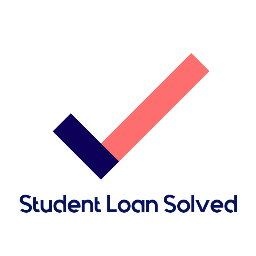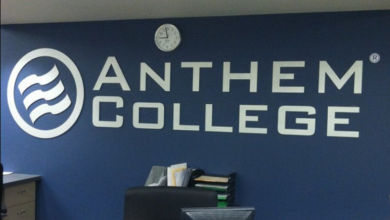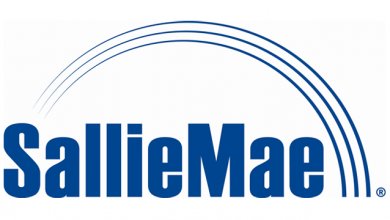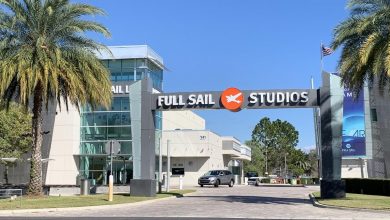AES Student Loans Forgiveness Guide

A student loan servicer is an organization that helps people who need money borrow it. This company takes care of the paperwork and makes sure that everything is done correctly. A guaranty agency is another name for an insurance company. So if you have a bad credit rating or payment history, this company could help you out.
Are AES student loans federal or private?
American Education Services Student Loans are federally guaranteed and issued by the U.S. Department of Education, so they’re considered a “federal loan.” However, you can also apply for an AES loan through your local bank or credit union. The terms and conditions may vary from lender to lender.
AES student loan forgiveness programs
The American Educational Services (AES) offers several different financial aid options to eligible students. These include:
• Federal Loan Forgiveness Programs – You can receive up to $23,000 in total debt relief over ten years if you meet certain requirements. You must complete 120 on-time payments while enrolled at least half-time, maintain satisfactory academic progress, and not incur late fees or defaulted payments.
• Income-Based Repayment Program – If you make less than $20,050 per year, you will pay no interest during the first five years of repayment. After that, you will only pay 15% of discretionary income, which is defined as your adjusted gross income minus 150%. Your monthly payment will never exceed 25% of your discretionary income.
• Public Service Loan Forgiveness Program – If you work full time for a public service employer such as a school district, fire department, police department, public health clinic, social services agency, etc., you may qualify for loan forgiveness after making 120 qualifying payments.
What does it mean when I get denied a loan?
If you’ve been rejected for a loan, it doesn’t necessarily mean that you won’t be able to get one. Many factors are involved with getting approved for a loan, including your credit score, employment status, and other personal details. It’s important to know what you can do to improve your acceptance chances. Here are some things to keep in mind:
1. Be honest about your finances
2. Try to get preapproved before applying
3. Don’t miss any payments
4. Consider consolidating your debts
5. Make sure you’re using all available resources
6. Get multiple quotes
7. Shop around for lenders
8. Keep track of your application process
AES Federal Student Loan Abbreviations

The U.S. Department of Education has a long list of acronyms for the various types of federal student loans available to students and their parents/guardians. This page provides a brief overview of each type of loan, along with some frequently asked questions about them.
Federal Pell Grant Program
Pell Grants provide financial assistance to eligible undergraduate full-time students who demonstrate financial need. Eligible students must have applied for admission by the priority deadline date listed in the FAFSA. In addition, students must be enrolled at least half time (12 or more credits) during the academic year they receive a grant. The amount you will receive is based on your family’s adjusted gross income (AGI), the number of credit hours you enroll in college, and the availability of funds.
Note: Applicants must also be U.S. citizens or permanent residents.
Federal Work-Study Program
Work-study is a program through which employers contribute money toward the cost of education for employees who agree to perform part-time jobs related to their field of study. Under this program, employers pay tuition costs directly to eligible institutions. In return, workers are expected to earn an hourly wage equal to 20% of the difference between their wages and the prevailing minimum wage. You must be enrolled at least part-time and work at least 20 hours per week to be eligible for this program.
Will AES student loans be forgiven?
Yes! Congress recently passed legislation called the William D. Ford Direct Loan Consolidation Program. This law allows borrowers who consolidate their federal student loans into an affordable repayment plan to receive up to $23,000 in loan cancellation benefits over ten years. However, this benefit applies only if you consolidated loans under certain conditions, including making at least 12 monthly payments while enrolled in a consolidation program.
Can I consolidate my loans from another lender?
No. Only loans issued by the Department of Education qualify for consolidation.
How much will it cost me to borrow the maximum amount of subsidized Stafford Loans?
You can borrow up to $31,500 per year in subsidized Stafford Loans, including interest, fees, and insurance. After you complete a Free
What to consider before refinancing American Education Services student loans

The average college graduate has $28,000 in debt. The average student loan borrower owes more than $37,000. And the average American household with a mortgage has about $8,500 in credit card debt. (Source: Federal Reserve Bank of New York)
AES student loans are not like other types of consumer debt. Instead, they have unique features that differentiate them from traditional home and auto loans. These differences include lower interest rates, no-prepayment penalties, and the ability for borrowers to refinance their loans without paying any fees or fines. But there are also some downsides to this type of financing – including higher interest rates compared to other forms of borrowing.
Pros of refinancing AES student loans
Refinancing AES student loans may offer several advantages. For example, most fixed-rate loans have variable rates tied to changes in the prime rate or the LIBOR index. Some of these loans even charge additional interest if you miss a payment. While refinanced American Education Services student loans don’t carry such hidden charges, they still come with slightly higher interest rates. If you seek to lower the overall total amount of your monthly payments, refinancing may be a good option.
Cons of refinancing AES student loans
If you aren’t planning on repaying your loans anytime soon, refinancing AES student loans may not be the best choice. Most private student loans do not allow borrowers to transfer balances to new lenders. Therefore, if you decide to switch lenders, you’ll need to start from scratch.
If you want to reduce the total amount of your monthly repayments, but you’re afraid you won’t be able to afford the higher interest rates associated with refinancing, then you should look at lower-cost options first. For example, you could try consolidating your student loans with one low-interest provider. Or you could apply for an income-based repayment plan, which caps your monthly payment at 15% of your discretionary income. Another option is to ask your school’s financial aid office for help finding grants or scholarships.
Key Points to AES Student Loans
Political Fights and Lawsuits
Many Americans are concerned about the return of interest accrual and restarting their monthly student loan payments while a political battle over Joe Biden’s debt forgiveness plan continues. The plan aims to provide relief of up to $20,000 for eligible borrowers and up to $10,000 for borrowers with less than $125,000 in annual income. However, applications for student debt relief were suspended due to lawsuits launched by Republicans, and the plan has been tied up in the U.S. courts since last year. A ruling from the U.S. Supreme Court on the issue is expected soon.
IDR Account Adjustment
The Biden administration introduced the IDR Account Adjustment, a one-time fix to address ongoing issues with federal Income-Driven Repayment (IDR) plans. IDR plans allow borrowers to make payments based on their income and family size, and they can potentially lead to student loan forgiveness. Previously, periods of nonpayment, deferment, forbearance, and loan consolidation could affect the loan forgiveness timeline. The IDR Account Adjustment aims to provide relief and streamline the forgiveness process.
$6 Billion Student Loan Class-Action Settlement
The Supreme Court declined to block a class-action lawsuit settlement brought by student loan borrowers who claim their schools defrauded them. This settlement, totalling $6 billion, involves more than 150 schools, primarily for-profit institutions. The U.S. Department of Education can continue delivering on the loan forgiveness settlement, benefiting the affected borrowers.
$2.4 Billion Student Loan Forgiveness
The Department of Education announced that 38,000 borrowers had been approved for $2.4 billion in loan forgiveness under a temporary expansion of the Public Service Loan Forgiveness (PSLF) program. This expansion, known as the Limited PSLF Waiver, addresses the challenges and high denial rates associated with the PSLF program. The waiver program relaxes certain requirements and allows more categories of federal student loans and repayment plans to qualify for forgiveness.
Challenges to Biden’s Student Loan Forgiveness Plans
President Biden’s student loan forgiveness plans and the extension of the student loan pause are facing challenges from Republicans in Congress and legal disputes. Congressional Republicans have introduced a resolution to repeal Biden’s forgiveness initiative, which would cancel up to $20,000 in federal student loan debt. Additionally, the Supreme Court is considering legal challenges to these plans. The resolution also aims to end the extension of the student loan pause. The outcome of these challenges and the future of the forgiveness plans are still uncertain.







